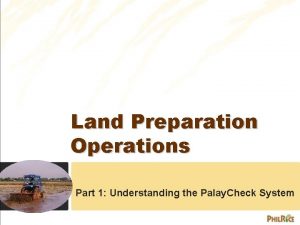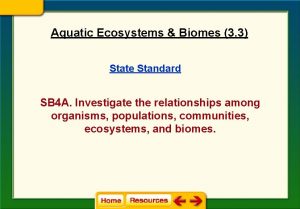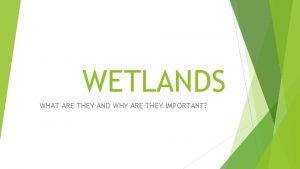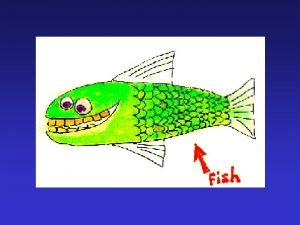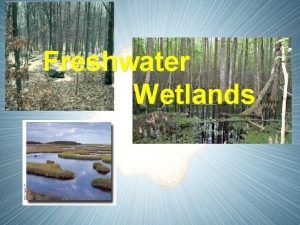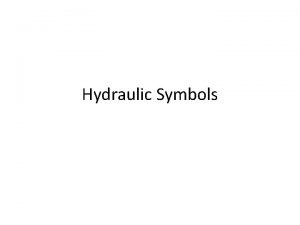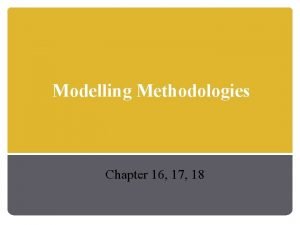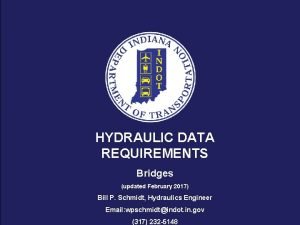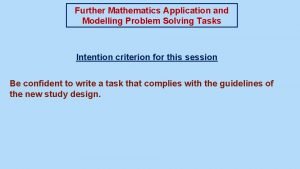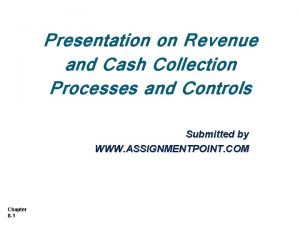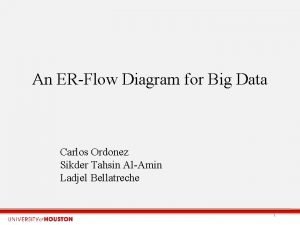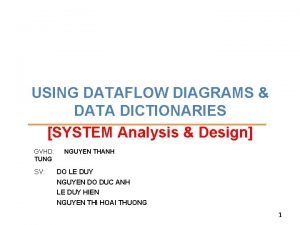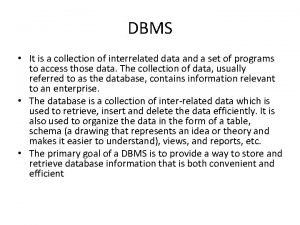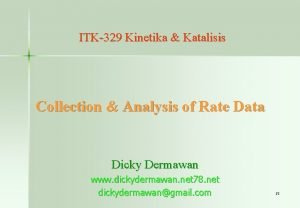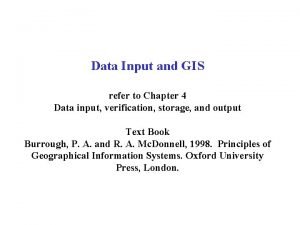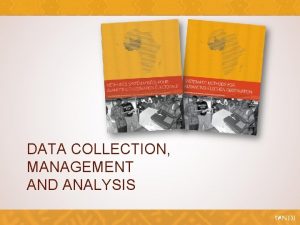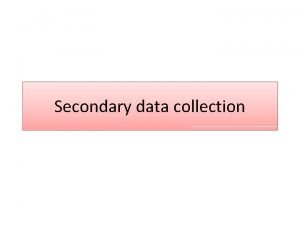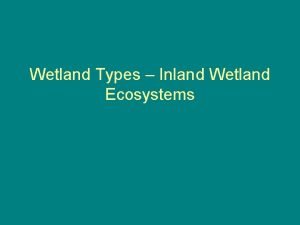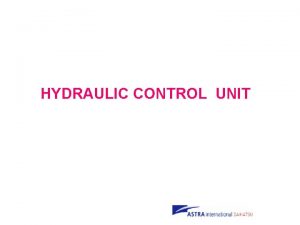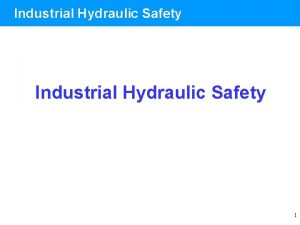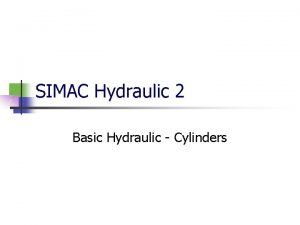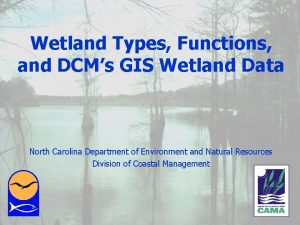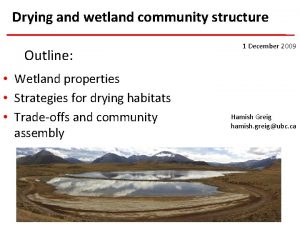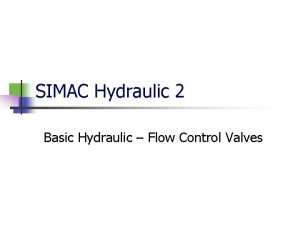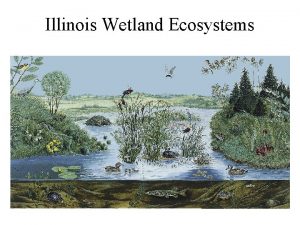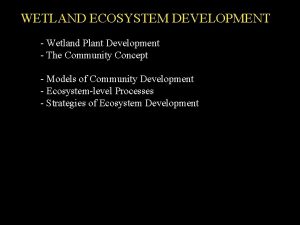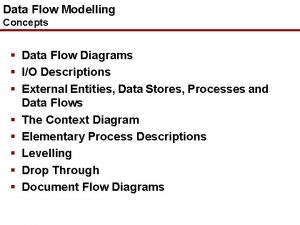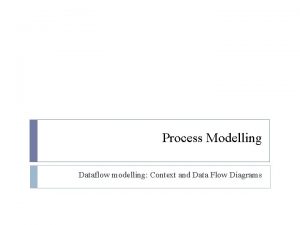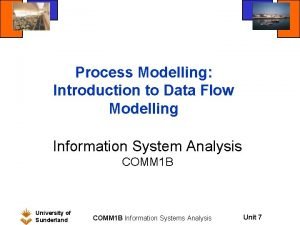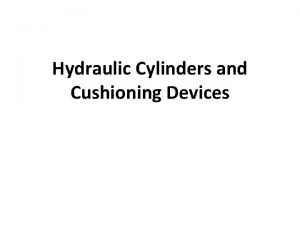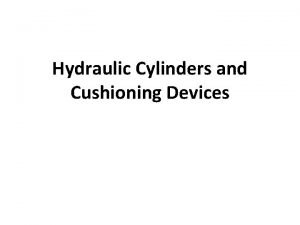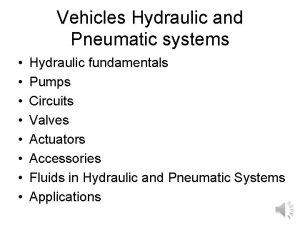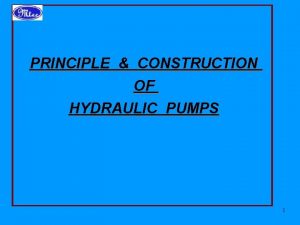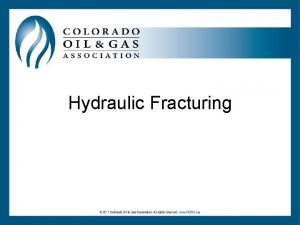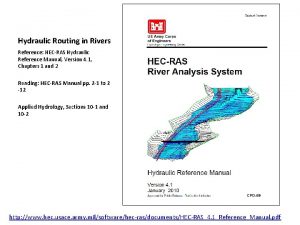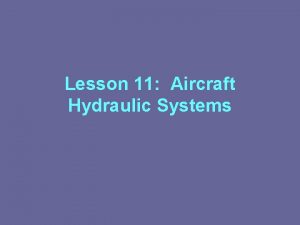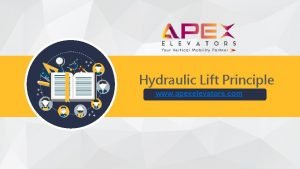Hydraulic Modelling of wetland flow Data collection and





































- Slides: 37


Hydraulic Modelling of wetland flow Data collection and problem solving Prof. dr. ir. Ronny Verhoeven Hydraulics Laboratory Ghent University Belgium WETHYDRO WORKSHOP – 13 – 14 June 2003

Hydraulic Modelling of wetland flow • • • Introduction Hydraulic modelling of open channel flow Extension to wetlands Data collection – problems, questions, solutions Input data – problems, questions, solutions Conclusions - questions WETHYDRO WORKSHOP – 13 – 14 June 2003

Introduction Engineer >> translates reality into formula Deterministic approach is what he likes: p = r g h Stochastic representation is what he needs to live with

Introduction

Hydraulic Modelling of open Channel Flow Supositions • Uniform velocity distribution: Q = A. U • Prismatic bed – constant cross-section • Hydrostatic cross sections • Constant bottom slope • Constant friction factor

Hydraulic Modelling of open Channel Flow Steady state Continuity: Q=A. U Motion – Bresse equation: Uniform flow >> Manning << U = 1/n. R 2/3. S 01/2

Hydraulic Modelling of open Channel Flow Unsteady state Saint Venant equations Continuity: Motion:

Hydraulic Modelling of open Channel Flow Unsteady state Saint Venant equations – solved by implicit finite difference Preismann scheme >> choise of Q is important > stability >> choise of Ds and Dt also > accuracy


Extension to wetlands Quasi 2 D modelling >> Network structure - flow >> Cells - exchange of volumes >> Combination - what to choose?




Input data – what do we need? Topographical • Cross-sections of river and floodplain • Longitudinal profile (Thalweg) • Water levels ( f(t) ) Hydraulic • Discharge ( f(t) ) – lateral discharges • Friction coefficients • Sediment transport (bottom / suspended)

Data collection Topographical • ? Distance between 2 cross-sections • ? Boundaries of flood plains • Altitude measurements should be the most accurate ones • Accuracy of measurements is influenced by: - mud - vegetation - obstacles in cross-section - soft bottom

Data collection Hydraulic data – discharge measurements • Integration of velocity field over cross-section • Propeller meter or electromagnetic, acoustic velocity meter • From bridge or from boat

Data collection Hydraulic data – discharge measurements > Problems < • Velocity distribution – horizontal / vertical

Data collection Hydraulic data – discharge measurements > Problems < Influence of • Vegetation - velocity fluctuation as a function of time - slowing down propeller - block the propeller - local influence on velocity meter • Stones or rocks • Soft bottom • Wind while measuring from a boat • Measuring errors



Input data How to determine the cross-section?

Input data How to determine the cross-section? ?

Solution: define cross-section with A, P and R equal to the average value of all cross-sections >> Calibration of friction coefficient becomes very important !!!

Input data How to determine the longitudinal profile? Effect of friction!

Input data How to determine the bottom slope?

Input data How to determine the friction coefficient • n = f (bottom roughness, shape cross-section, vegetation, obstacles, meandering, velocity distribution, …) • n = f (time, location, interaction of previous parameters) • n must be determined from measurements Q hd hu Bresse n

Determination of n using: • Uniform flow principle (Manning formula) • Bresse equation


BUT!!!

Hydraulic Modelling of open Channel Flow

Hydraulic Modelling of open Channel Flow

Conclusions and Questions • Flood-routing theory is quite simple • Numerical solution methods are well developed • Practical application is confronted with many inaccuracies • Good simulation results thanks to well considered calibration • ? Definition of cross-section? • ? Determination of longitudinal profile? • ? Best way to determine the friction coefficient? • ? Suggestions to improve measurements quality?

Acknowledgements T. Okruszko, S. Ignar, R. Michalowski, J. Chormanski, D. Swiatek, I. Kardel SGGW, Warsaw L. Van Poucke, M. Huygens, R. Banasiak Hydraulics laboratory, Ghent University Universities of Brussels and Antwerp Funding from Polish and Flemish government bilateral cooperation projects Biebrza National Park Authorities

1998 2002


 Use in wet and dry land preparation
Use in wet and dry land preparation Biome sb
Biome sb Submerged gravel wetland
Submerged gravel wetland What does a wetland do for the environment
What does a wetland do for the environment Inland wetland
Inland wetland Wetland ecosystem definition
Wetland ecosystem definition Modelling relationships and trends in data
Modelling relationships and trends in data Control flow and data flow computers
Control flow and data flow computers Hydraulic symbols
Hydraulic symbols Research procedure in methodology
Research procedure in methodology Unit 5 data modelling assignment 2
Unit 5 data modelling assignment 2 Data modelling techniques in business intelligence
Data modelling techniques in business intelligence Data modelling methodologies
Data modelling methodologies Power platform data modelling
Power platform data modelling Data modeling concepts
Data modeling concepts Landsat collection 1 vs collection 2
Landsat collection 1 vs collection 2 Clean collection vs documentary collection
Clean collection vs documentary collection Data flow vs control flow
Data flow vs control flow Data collection secondary data sources
Data collection secondary data sources Hydraulic data required for bridge design
Hydraulic data required for bridge design Hydraulic data
Hydraulic data Define geometric modelling
Define geometric modelling Problem solving and modelling task example
Problem solving and modelling task example Cash collection process
Cash collection process Big data data flow diagram
Big data data flow diagram Data flow diagram data dictionary
Data flow diagram data dictionary Transform flow and transaction flow
Transform flow and transaction flow Data flow structure
Data flow structure Irrotational flow means
Irrotational flow means Internal vs external flow
Internal vs external flow Define laminar flow
Define laminar flow Methods of data organization and presentation
Methods of data organization and presentation A collection of interrelated data files or tables
A collection of interrelated data files or tables Collection and analysis of rate data
Collection and analysis of rate data Gis data input
Gis data input Data collection management and analysis
Data collection management and analysis Data raw facts and figures 11 letters
Data raw facts and figures 11 letters What is secondary data
What is secondary data
